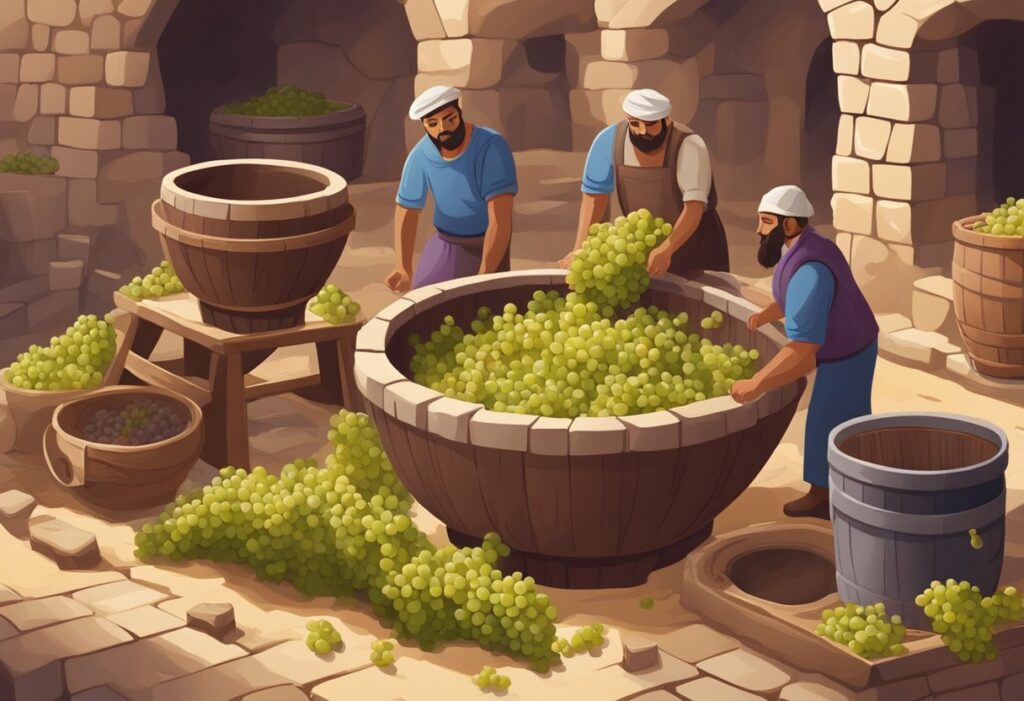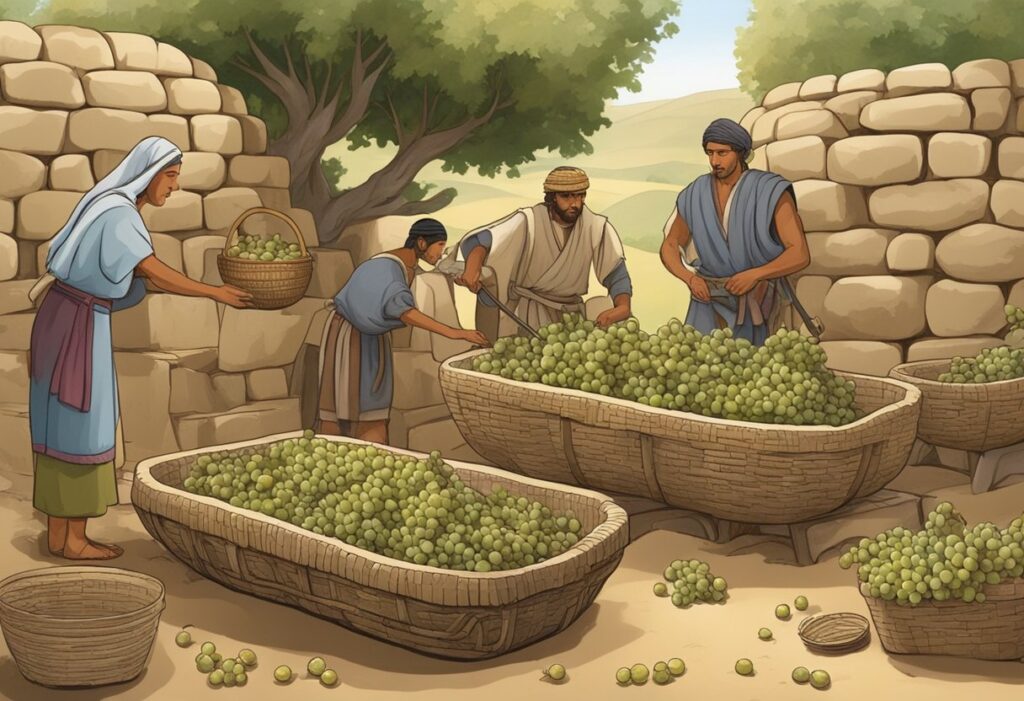The Greek symposium was more than just a party; it was a central part of ancient Greek culture. At these gatherings, men drank wine, talked about philosophy and politics, and enjoyed entertainment. The symposium was a key social and political hub where ideas flowed as freely as the wine.
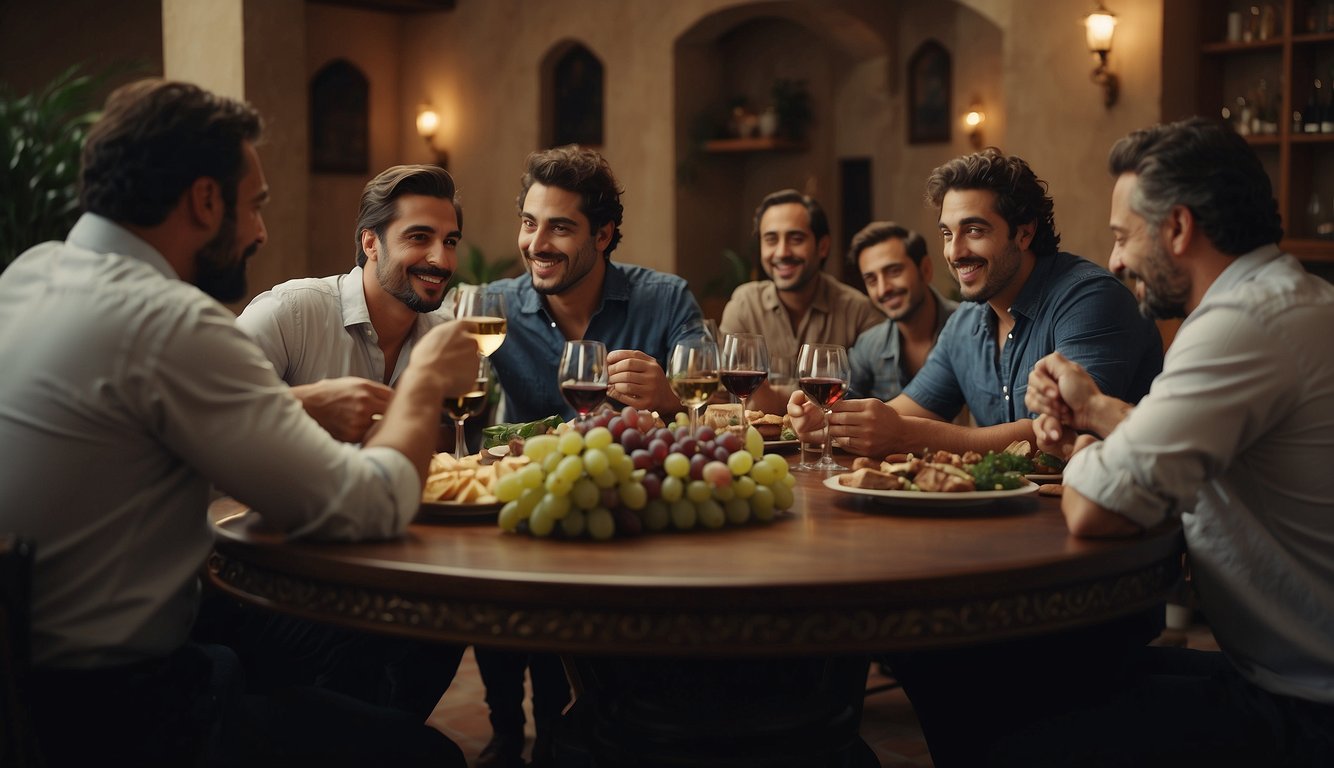
Imagine reclining on a couch, garland on your head, in a room designed specifically for these events. As you sip your wine, you engage in deep conversations about the issues of the day. The blending of enjoyment with serious discussion made the symposium a cornerstone of Greek society.
These events were exclusive. Participation was reserved for male aristocrats, and the setting was always carefully arranged. The importance of the symposium in ancient Greece cannot be understated, as it provided a space for influential discourse and bonding among the elite. For a closer look into this fascinating social ritual, learn more about the Greek symposium.
The Cultural Fabric of Greek Symposiums
Symposiums were central to life in ancient Greek society. They offered a space for drinking, socializing, discussing philosophy, and shaping social and political life in the polis.
Historical Context and Origins
In the 7th century BCE, the symposium became a popular social event in ancient Greece. These gatherings, often held by aristocratic men, served as places to discuss various topics such as philosophy and politics. The term “symposium” literally means “drinking together,” highlighting the importance of wine in these events.
Symposiums were usually conducted in private homes, decorated with couches and low tables. Participants reclined on couches, enjoying conversations and entertainment. The events often started with a meal, but the main focus was on drinking and engaging in intellectual discussions. Greek literature and visual arts provide many references to these gatherings, showing their importance in ancient Greek culture.
Symposium as a Social Institution
Symposiums played a significant role in the social structure of the polis. These events allowed men to bond, discuss important issues, and share ideas. The drinking and conversations that took place were more than mere social activities—they fostered a sense of community and belonging among participants.
The symposium also served as an educational institution where young men could learn from their elders. They discussed a wide range of subjects, including philosophy, politics, and poetry, helping to shape their views and understanding of society.
By engaging in these intellectual and social activities, participants strengthened their ties within the community and influenced the political landscape of ancient Greece.
Anatomy of a Symposium
In ancient Greek society, symposiums were well-ordered social events. They typically took place in a dedicated room called the andron and included structured activities such as feasting and intellectual discussions.
Setting the Scene: Andron and Furnishings
The andron was the designated room for a symposium. It was specifically designed to host these events and could hold around seven to fifteen couches. Each couch often had cushions for comfort and was accompanied by low tables. The tables held food, drinking cups, and mixing vessels.
Participants reclined on the couches, usually two men per couch. A key item in the room was the krater, a large vessel used to mix wine with water. Wine was an essential element but was always mixed with water to ensure moderation. Drinking cups were then filled from the krater.
The atmosphere was lively. Men adorned themselves with garlands and enjoyed music, philosophical discussions, and poetry recitals. The layout and items in the andron reflected the importance of comfort and social interaction.
From Start to Finish: The Banquet Course
The symposium typically began with a deipnon, or banquet course. This was the main meal and included various foods, depending on the host’s wealth. After the meal, the symposium proper began, marking the transition to drinking and more relaxed activities.
Wine was served using a specific process. The wine was poured from a krater, which was essential for the ritual of mixing wine and water. Mixing vessels ensured the wine wasn’t too strong, maintaining a controlled and pleasant environment.
Participants drank from individual cups and often participated in toasts and libations. Drinking games were common, adding to the festivities. Discussions at these events ranged from politics and philosophy to poetry and current events, making the symposium an integral part of social and intellectual life.
The structure and rituals of a symposium highlight its significance in Greek culture. The andron, furnishings, and carefully orchestrated activities all contributed to creating a memorable social experience centered around wine and conversation.
The Social and Political Art of Drinking
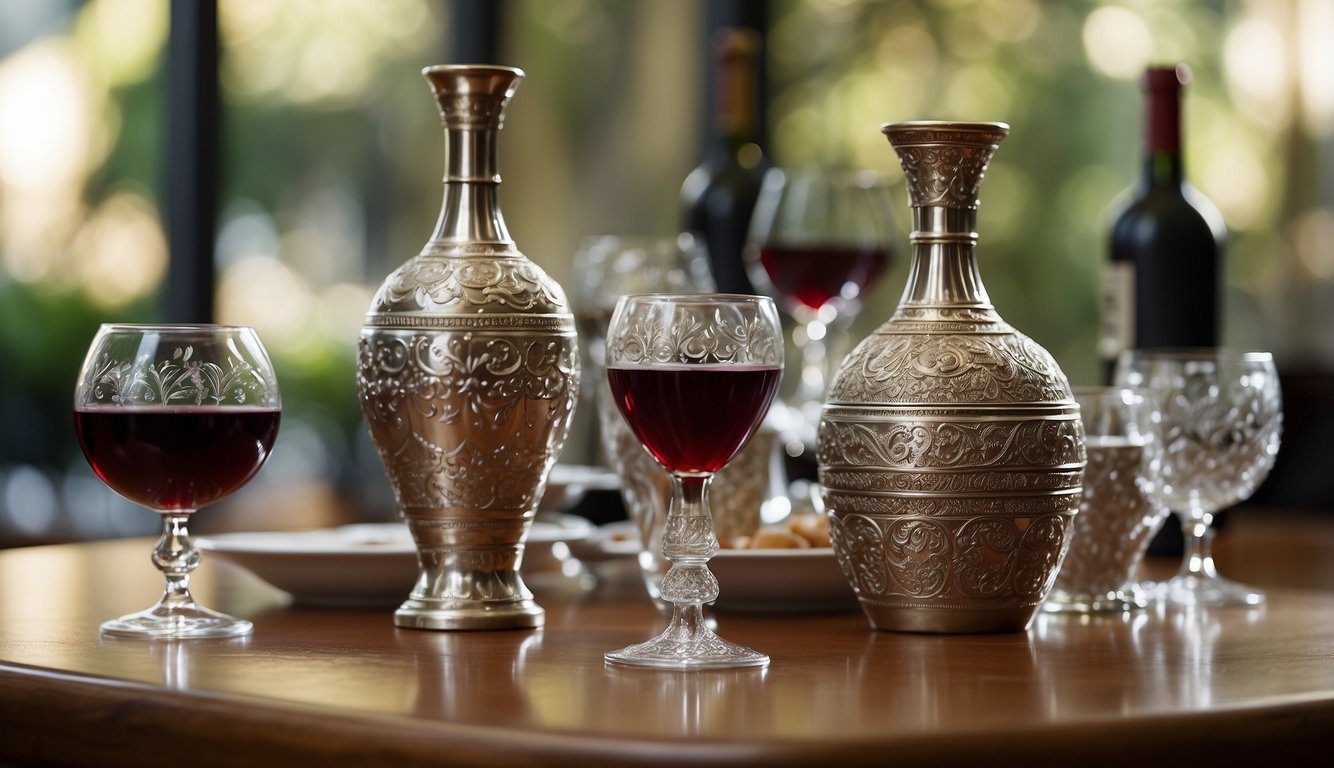
Greek symposiums were more than just gatherings for drinking wine. They were carefully orchestrated events where social rituals and power dynamics played an essential role.
Wine and the Rituals of Consumption
In a symposium, drinking wine was a central ritual that highlighted cultural norms. You could see guests reclining on couches, often garlanded in flowers. Wine was typically mixed with water in large kraters and then poured into cups using jugs. This way, the drinking pace and the social atmosphere could be controlled.
The symposiarch, or host, had a significant role here. He decided the wine-to-water ratio, setting the tone for the evening. This position gave him the power to influence the flow of conversations and activities. Wine was also served in rounds, ensuring everyone drank together and shared common experiences.
Additionally, professional entertainers like the hetaira or courtesans often performed, adding a layer of sophistication and intellectual conversation to the revelry. It’s not just about drinking wine; it’s about fostering a shared cultural and social experience.
Power Dynamics and Charismatic Hosts
At the heart of the symposium, the host wielded substantial influence. Much more than just providing wine, the host, or symposiarch, managed the event’s dynamics. This role allowed him to display his wealth, taste, and social astuteness.
The seating arrangement could reflect the power relations among the guests. Prominent figures often got better spots, showing their importance and influence. Through clever management of toasts and conversations, the host could navigate the evening’s political undertones and alliances.
Charismatic hosts had the skill to guide discussions on philosophy, politics, or poetry, engaging all present. This ability to create an environment where important ideas were exchanged made the symposium a breeding ground for political thought and influence.
Cultural Dynamics at Play
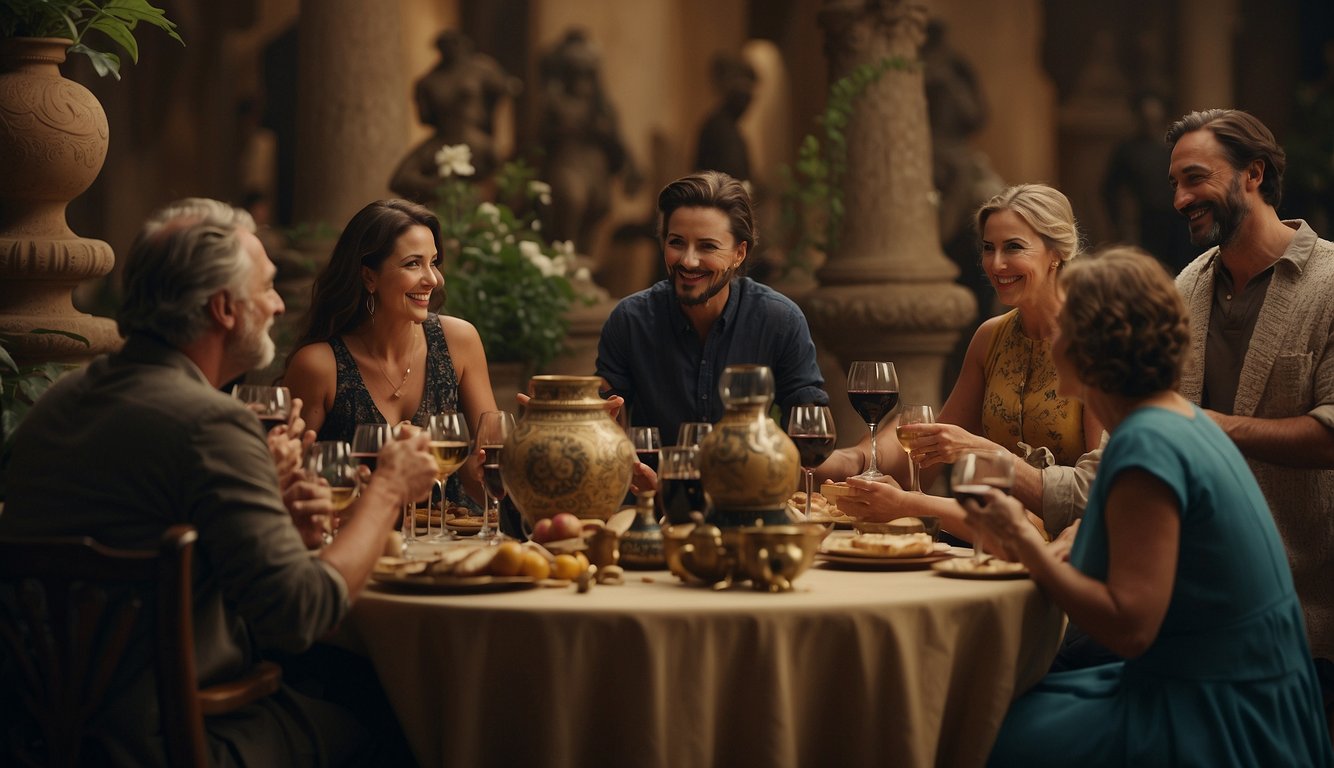
Greek symposiums were rich with various forms of entertainment and complex social interactions. These gatherings were more than just drinking parties; they were vivid displays of culture and social hierarchy.
Entertainment and Activities
At a symposium, music and dance were central forms of entertainment. Musicians played lyres and flutes, while dancers, often hired for the event, performed intricate routines. Participants also engaged in philosophical discussions and recited poetry, which showcased their intellect.
One popular game was kottabos, where guests flicked wine residue at a target. Komos, a spirited procession often involving singing and dancing in the streets, followed the symposium, extending the festivities beyond the private setting.
The Role of Women and Marginalized Groups
Women, particularly wives, were typically excluded from symposiums. However, hetairai (courtesans) and slave boys were present. Hetairai were not just entertainers but also participated in conversations, blending charm with intellect.
Though marginalized, these groups still played significant roles. Their presence highlighted the rigid social hierarchy of ancient Greece. Women in these roles had varying degrees of influence, sometimes affecting the mood and dynamics of the entire gathering.
Understanding the symposium’s cultural dynamics gives insight into ancient Greek society’s values and norms. For more details on the symposium’s social and cultural aspects, you can visit the Metropolitan Museum of Art and the University of Colorado’s Classics Department.
Influence on Literature and Philosophy

The Greek symposium played a crucial role in shaping literature and philosophy. It served as a gathering spot where ideas, debates, and stories flourished, leaving a lasting impact on classical texts and the pursuit of knowledge.
The Symposium in Classical Texts
At a symposium, participants engaged in lively discussions, which often found their way into classical literature. Plato’s “Symposium” is one of the most famous works depicting these gatherings. In this dialogue, figures like Socrates, Aristophanes, and Alcibiades discuss themes of love and beauty.
This setting provided a backdrop for exploring complex ideas in a conversational manner, making the philosophical content more accessible. Other authors, such as Xenophon and playwrights like Aristophanes, also used symposium scenes to discuss societal norms and human nature.
Theognis, one of the oldest Greek lyric poets, frequently referenced the symposium in his work, using it to frame his poetry about moral and social themes. Through these literary works, the symposium’s influence spread beyond its immediate context, enriching the cultural and intellectual landscape of Greece.
Philosophical Debates and the Quest for Knowledge
Symposiums were not just about drinking and socializing; they were arenas for serious philosophical debates. Socrates often used these gatherings to challenge and educate his peers, as seen in Plato’s dialogues. There, he engaged in deep conversations about ethics, justice, and virtue.
The symposium setting encouraged participants to ponder life’s big questions in a relaxed environment. Aristotle later reflected on these debates, examining the nature of human happiness and the best way to live.
These drinking parties became informal schools of thought, where philosophers like Plato could test their ideas and refine their arguments. Themes such as love, beauty, and education were frequently debated, influencing both personal beliefs and wider Greek philosophy. This tradition of intellectual dining helped shape the philosophical foundations of Western civilization.
